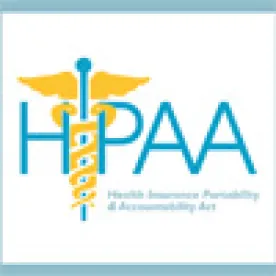In the last two weeks, the Office for Civil Rights (OCR) announced two substantial settlements under HIPAA that together totaled $4.35 million. These large amounts seem to be driven not by actual harm to individuals, but in significant part by alleged HIPAA compliance failures identified by OCR following investigations commenced in response to receipt of data breach reports. It is a mistake to believe that timely and otherwise compliant reporting of supposed “no harm, no foul” data breaches will result in minor, if any, enforcement activity; that is, if the agency believes you have not satisfactorily complied with the privacy and security standards.
Depending on the circumstances of the breach, an OCR investigation will look at why the breach occurred, but it likely will go beyond that to examine compliance with basic HIPAA privacy and security standards, even if indirectly related to the breach at hand.
Let’s see how this could play out. In the case of the $3.5 million settlement with Triple-S Management Corporation, there were a number of breaches reported to OCR:
-
Former Triple-S employees while employed by a Triple-S competitor improperly accessed restricted areas of a Triple-S subsidiary’s database. According to OCR’s announcement, the individual’s access rights were not terminated upon leaving Triple-S employment. This allowed the former employees to access names, contract numbers, home addresses, diagnostic codes and treatment codes of covered individuals.
-
As we reported, a Triple-S subsidiary reported to OCR that in September 2013 a vendor disclosed Medicare Advantage beneficiaries’ protected health information (PHI) on the outside of a pamphlet mailed to the beneficiaries, about 13,000 of them.
-
In another breach, a Triple-S subsidiary reported that a former employee of a business associate copied beneficiary ePHI onto a CD, took it home for an unknown period of time, and then downloaded it onto a computer at his new employer. The ePHI included beneficiaries enrollment information, including names, dates of births, contract numbers, HICN, home addresses’ and Social Security numbers.
-
Another breach involved enrollment staff who placed the incorrect member ID cards in mailing envelopes, resulting in beneficiaries receiving the member ID card of another individual. The PHI included members’ names, identification numbers, benefit packages, effective dates, contract numbers, co-payments and deductibles.
Note – these are not sophisticated systems attacks carried out by unnamed international identity theft rings or by nation states. They are essentially mistakes in the handling of PHI that can happen at any covered entity or business associate.
Each of the incidents above affected more than 500 individuals, and there were a handful of other breaches summarized in the resolution agreement affecting fewer than 500 individuals. But there was no discussion of harm to any affected individuals in support of the settlement amount. Instead, OCR itemized a number of alleged compliance failures, not all of which directly led to the breaches, such as:
-
Not implementing appropriate administrative, physical, and technical safeguards to protect PHI
-
Disclosing PHI to an outside vendor without a business associate agreement
-
Using and disclosing more than the minimum necessary PHI
-
Not conducting an accurate and thorough risk analysis that incorporates all IT equipment, applications, and data systems
-
Not implementing sufficient security measures to reduce risk to ePHI to a reasonable and appropriate level.
In addition to paying $3.5 million, Triple-S will need to establish a comprehensive compliance program satisfactory to OCR that includes a risk analysis and a risk management plan, policies and procedures for compliance with HIPAA requirements, training and other measures.
Of course, OCR’s approach makes sense in that its purpose generally is not to remedy harm to individuals affected by data breaches, but to enforce compliance with the HIPAA privacy and security standards. Covered entities and business associates should avoid, therefore, underestimating potential regulatory exposure because of a “no harm, no foul” view of reported data breaches. Compliance and steps to prevent breaches are the agency’s focus, not whether the breach actually harms affected persons, although significant harm to affected individuals would strengthen the agency’s enforcement position.
Preparedness is key!




 />i
/>i

